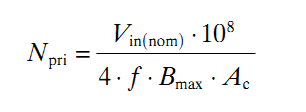Oldsmobile Designs from 1940 to Its '48 C-Body Redesign
And Oldsmobile had its own hierarchy of models. During the period dealt with here, these were the 60 Series, the 70 Series and the 90 Series. Those actual numbers were in use for the 1940 model year, but for 1941 and later the numbers were modified in the second digit place by a number indicating the number of cylinders of the motor used. For example, a 66 Series Olds was an entry-level model with a six-cylinder engine. In those days GM had three basic body types: A, B and C. For various years Oldsmobiles were built using at least two of those, and sometimes all three, as was the case for most of the 1940-48 period.
For some background, here are Wikipedia links dealing with types A, B and C. Series 60 Oldsmobiles used A-Bodies, Series 70s had B-Bodies, and 90 Series Oldsmobiles used C-Bodies in those days. All but the C-Body (redesigned for 1948) were in production through the 1948 model year.
I wrote about the 1947-1948 transition of 98 Oldsmobiles to the postwar C-Body redesign here, and discussed that redesigned Oldsmobile here. That subject will be part of the present discussion.
Unless noted, the images below are of cars listed for sale on the Internet or are factory-sourced images.
The 1940 Oldsmobile 60 shared A-Bodies with Chevrolets and entry-level Pontiacs.
Here is a B-Body Olds 70.
Topping the line were Series 90 models such as in this Barrett-Jackson photo. Even though the bodies differed in wheelbase, widow treatments and some other details, front-end styling was nearly identical across the Oldsmobile model line.
Fastback styling was added to B-Bodies for 1941, as seen in this Olds 76.
C-Bodies retained a notch-back look. They also were a four-window type in contrast to six-window four-door B-Body sedans. Olds 98s can also be identified by the chromed trim abaft of each wheel opening.
This appears to be an Oldsmobile 66 for 1942. All GM brands had front fenders overlapping front doors for that model year.
1942 Oldsmobile 98. With the lengthened fender, those fender trim items were replaced by chromed strips. Olds grille designs were rather complicated in the war-shortened 1942 model year.
Postwar production resumed for the 1946 model year. Here is a 66 sedan whose side trim is a chromed strip on the front fender and a rock guard on the rear fender. The grille has a new, simple theme featuring a few thick bars. Olds 60 and 70 series cars were almost completely unchanged in appearance through 1948.
The 1946 and 1947 Series 98 Oldsmobiles dropped the decoration on the sides of the hood and fender trim was modestly restyled. The main change was the grille design shared with lesser models.
General Motors C-Bodies were redesigned for 1948 and used by Oldsmobile 98s and Cadillacs that year. Side trim was carried over from the previous bodies with only detail changes. The grille theme was also retained for reasons of maintaining brand identity, though it was reshaped and two of those curved bars were eliminated. I consider 1948 Olds 98s the most attractive GM cars for that model year.













Comments
Post a Comment